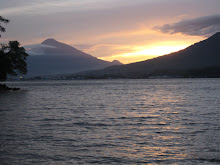
 I am really having my fill of perfect days this month (oh and last month too). I started writing this a few days ago when I was down in the Margaret River, it started: "I’m sitting here with a glass of zinfandel, listening to the new album by the sublime Swell Season who I saw playing live last weekend - one of the most amazing acts I’ve seen for a long time, after a day clambering over huge granite boulders, (getting more than a bit scared) watching massive waves on the Leewin Naturaliste National Park in SW Australia." Honestly, there aren't many days so perfect for me! Then I stopped. Just wanted to live the moment and could not write anymore...
I am really having my fill of perfect days this month (oh and last month too). I started writing this a few days ago when I was down in the Margaret River, it started: "I’m sitting here with a glass of zinfandel, listening to the new album by the sublime Swell Season who I saw playing live last weekend - one of the most amazing acts I’ve seen for a long time, after a day clambering over huge granite boulders, (getting more than a bit scared) watching massive waves on the Leewin Naturaliste National Park in SW Australia." Honestly, there aren't many days so perfect for me! Then I stopped. Just wanted to live the moment and could not write anymore...
Now I'm back to thinking and writing, and on my way to Singapore less than 24 hours, so a bit of time for reflection. What I love about being in Australia is that there is art everywhere. I am going to miss the sculpture that's just across the road from the apartment (on the quayside in Fremantle), a sculpture honouring the famous Fremantle Doctor, the south-westerly wind that blows inland.
In some ways it is quite unassuming, an old sea buoy with metal seagulls on top, a little quirky, with a strange string arrangement on top. This sculpture really takes off when the wind starts up – the wind ‘plays’ the strings. This sculpture was designed by Tony James (assisted by Pierre Caponi), and the wind harp designed by Alan Lamb. I love the fact that this sculpture responds directly to nature. It doesn't move, but it responds.
I stayed long enough to witness quite a few weather (and wind) changes. Some times when the wind was really blowing you could hear the wind harp from the other side of the road! Other times, there was barely a sound. What's nice about this sculpture is you can get really close and put your head between a static kind of pair of earphones which amplifies the sound. Yet again, I'm reminded that I want to get some sound recording gear! This sculpture really became part of my landscape for a few weeks, I will miss it.













